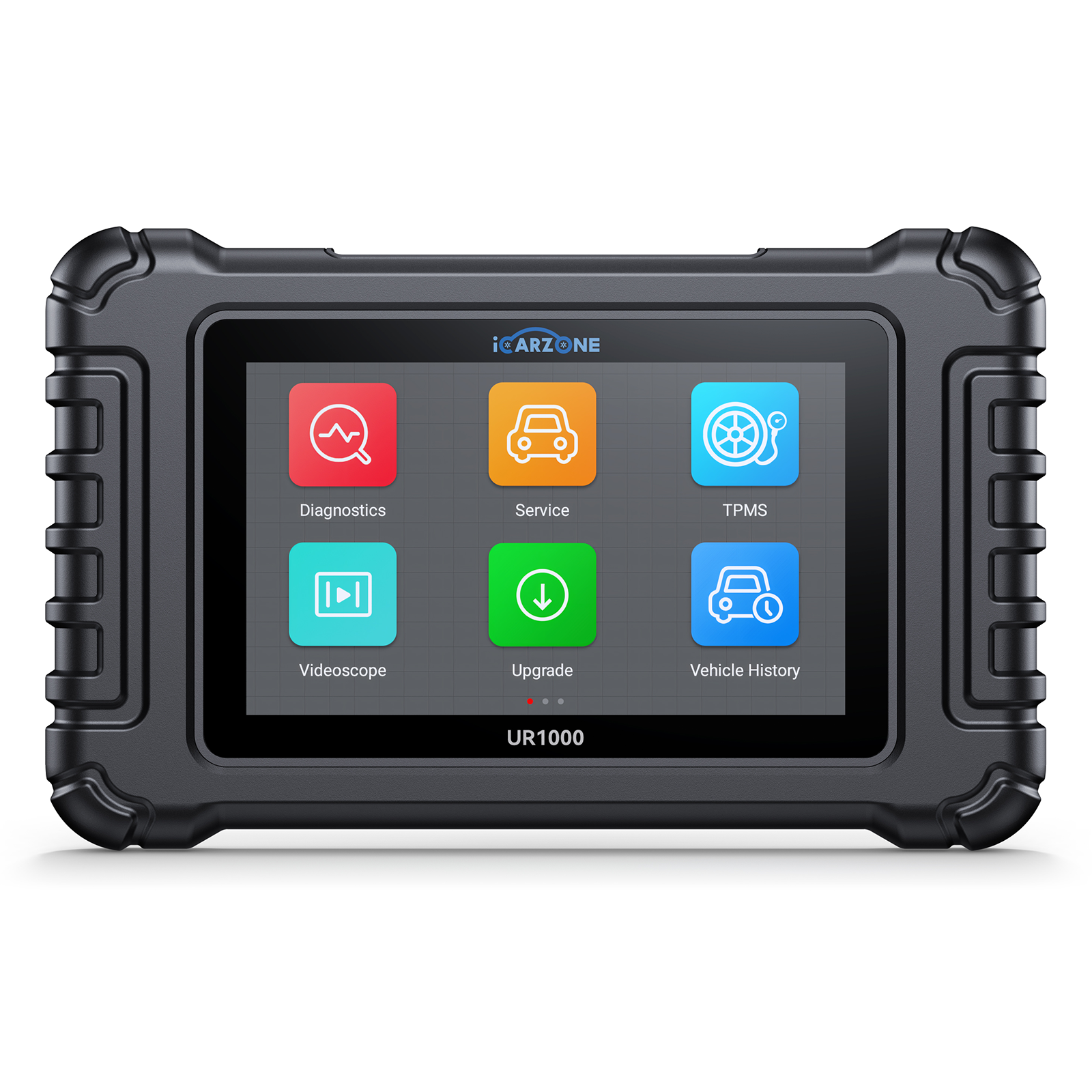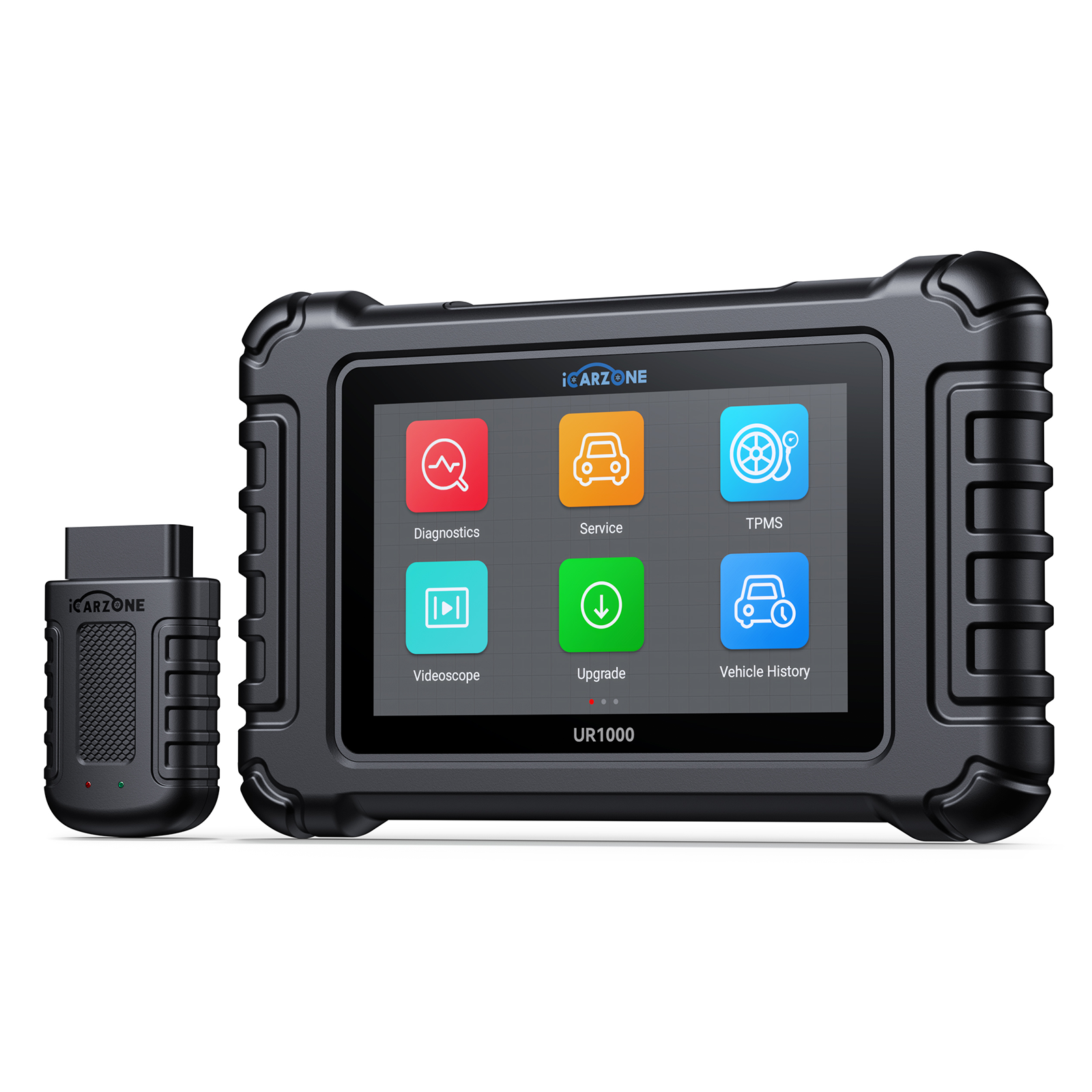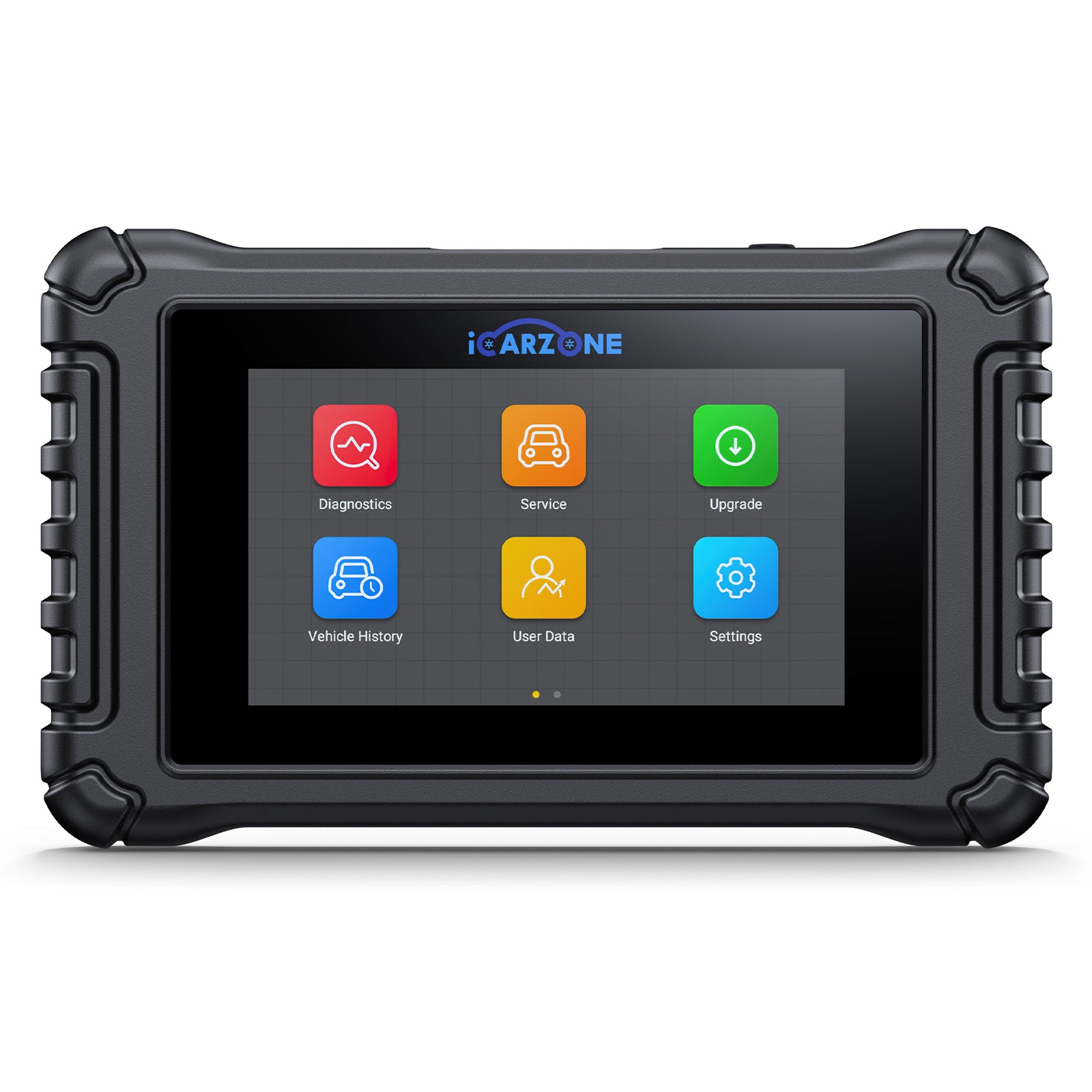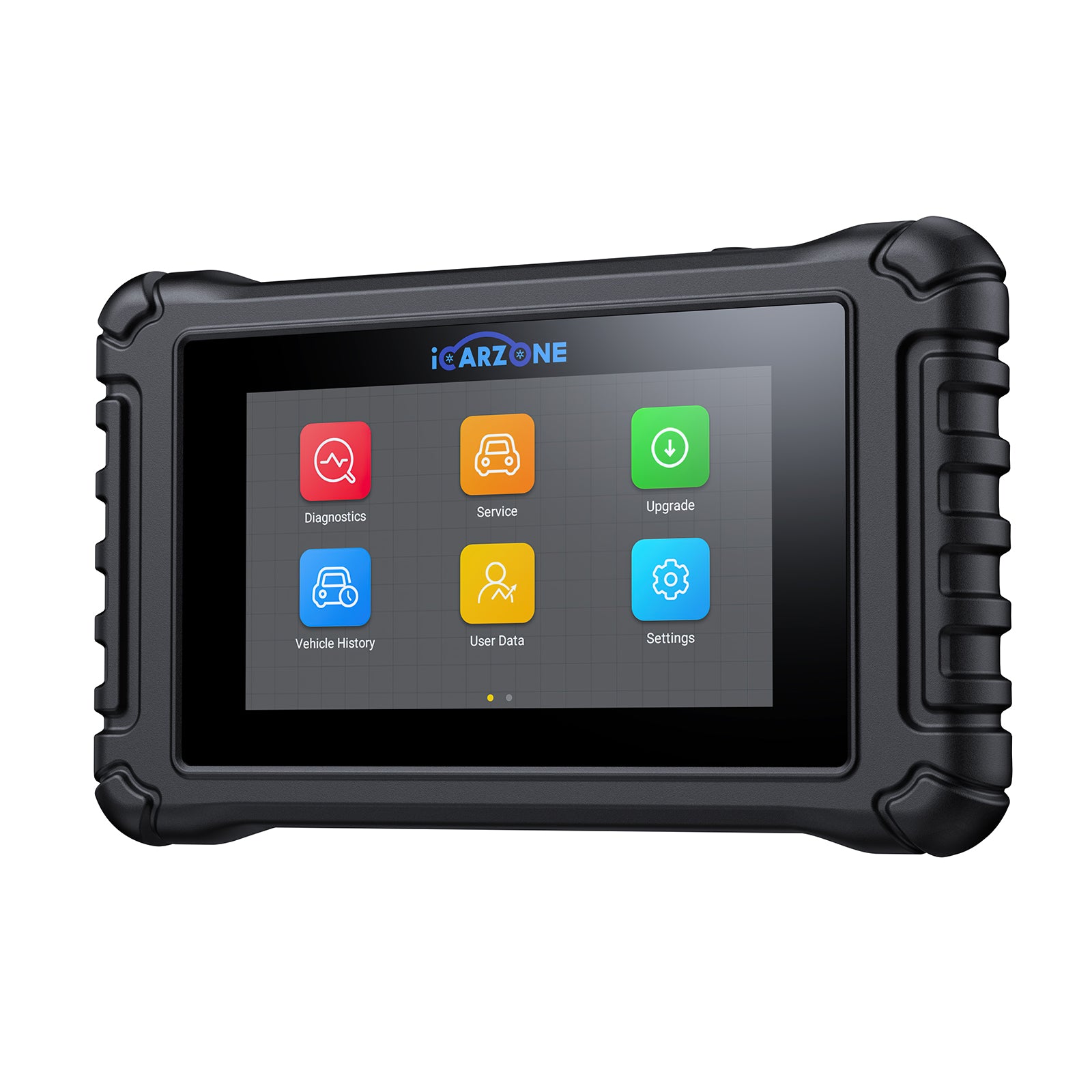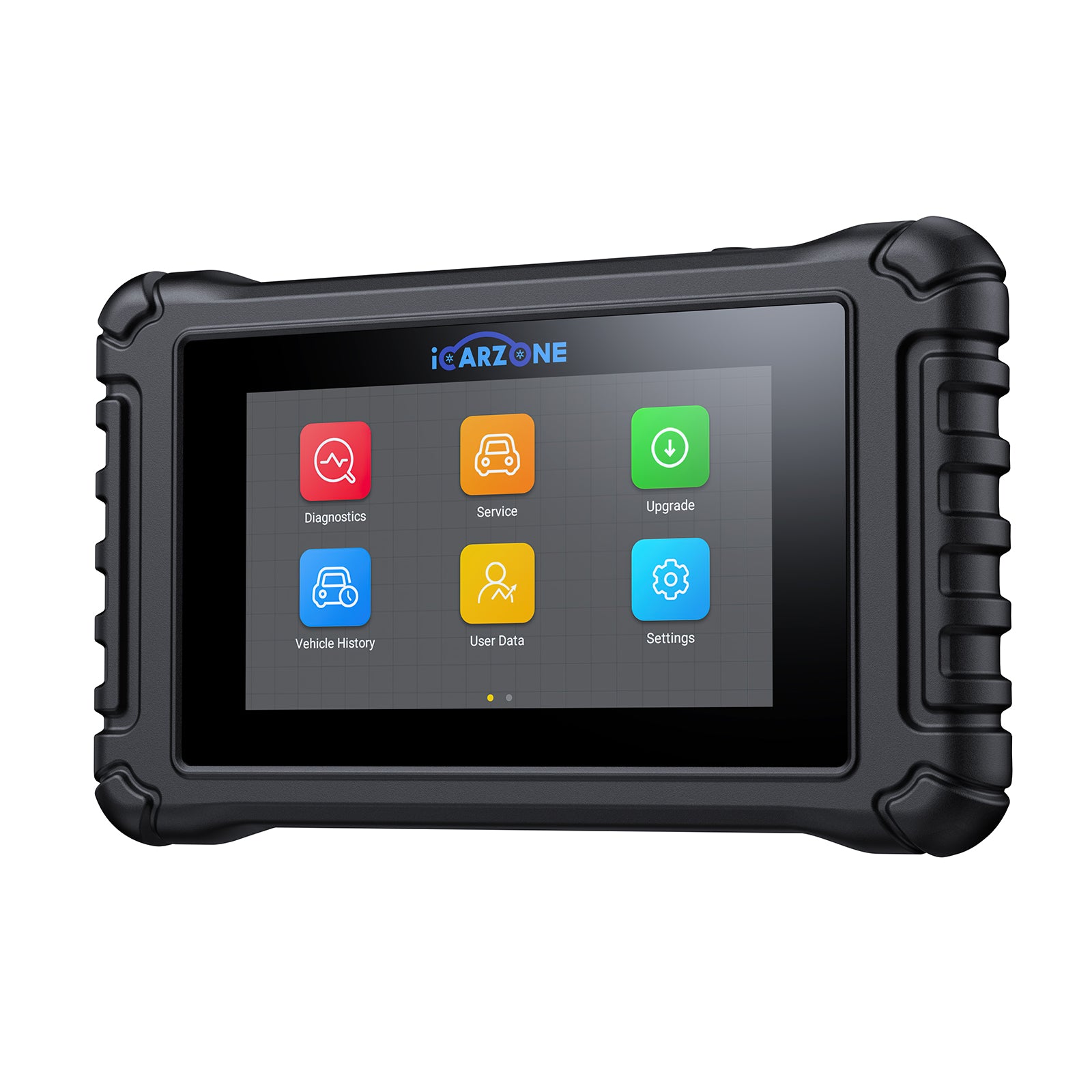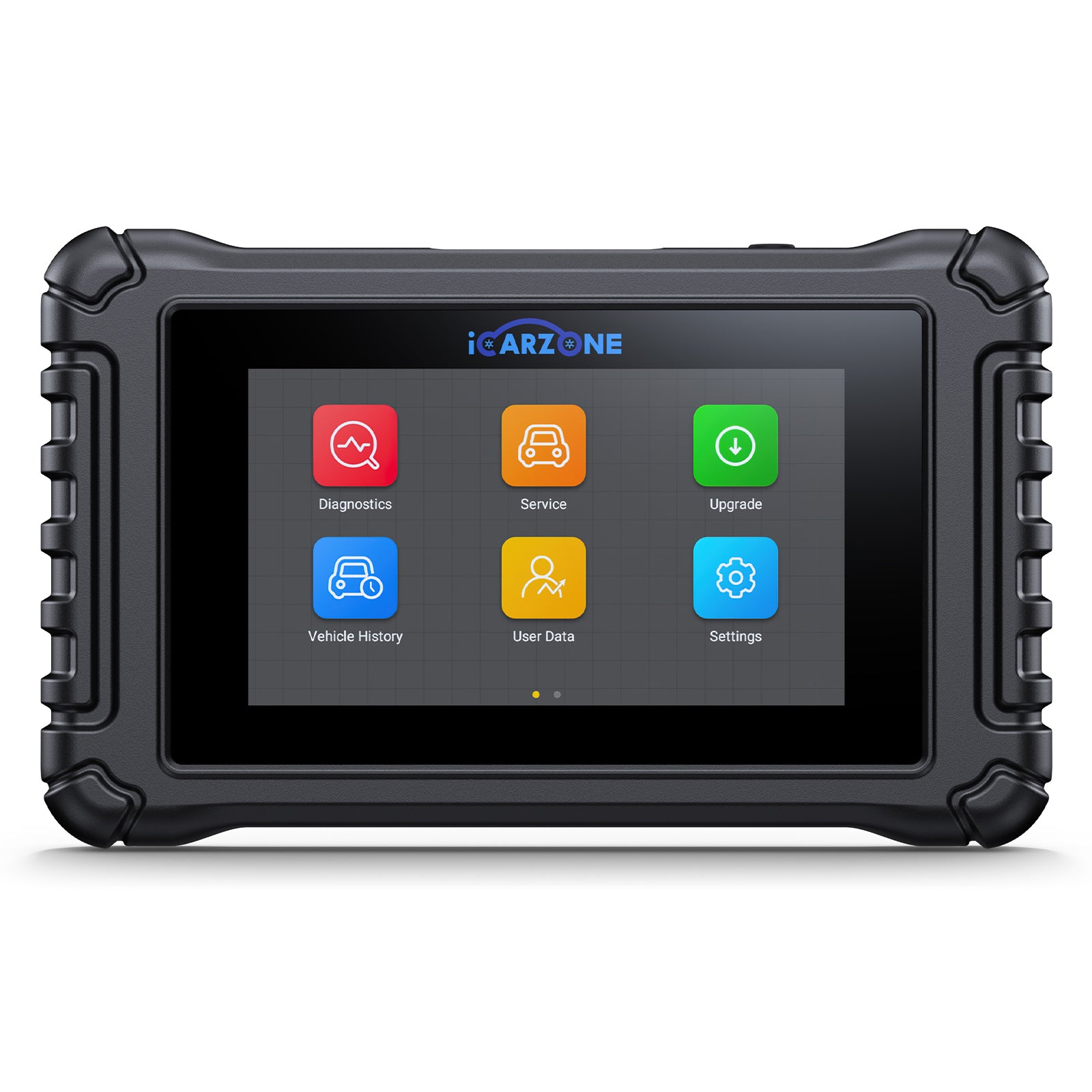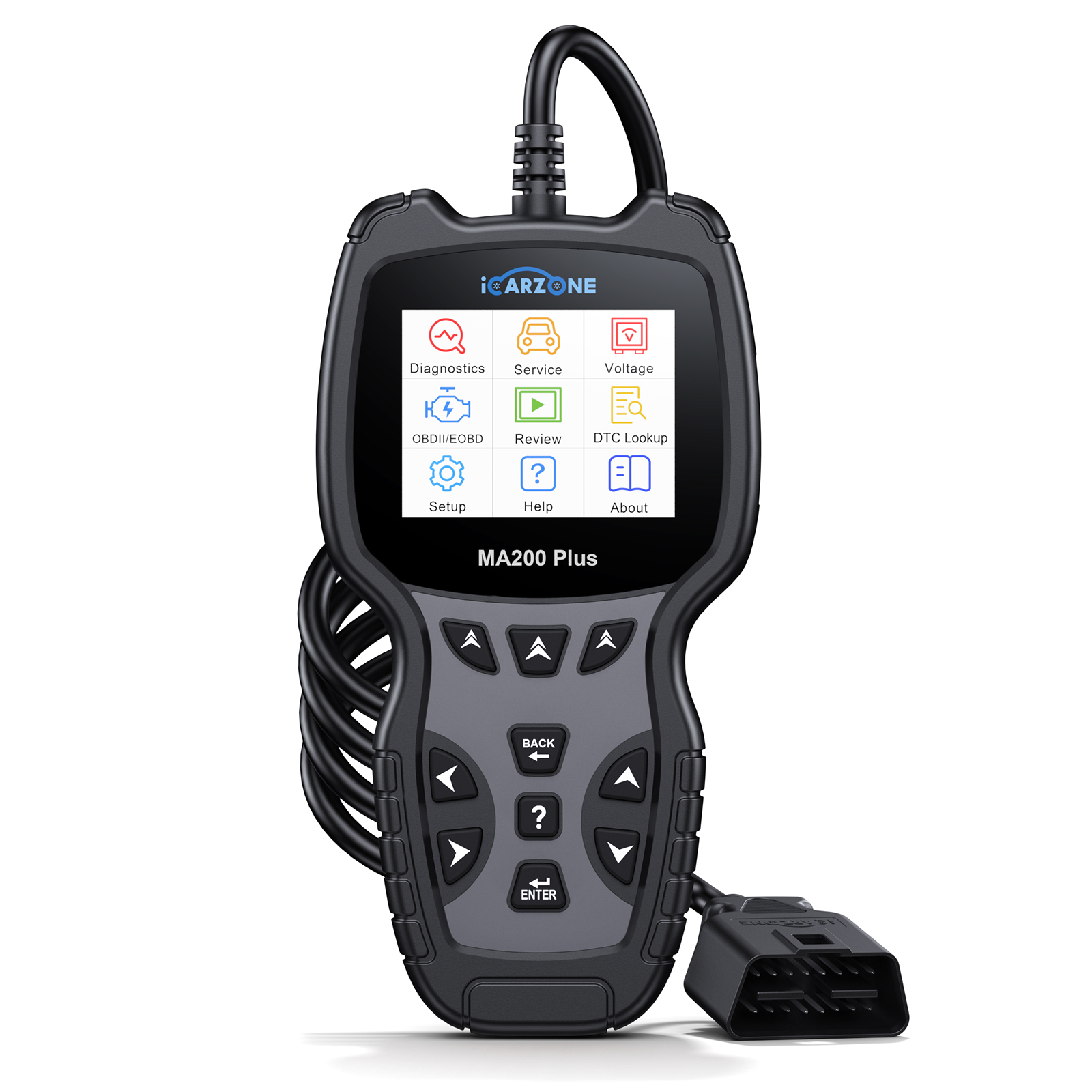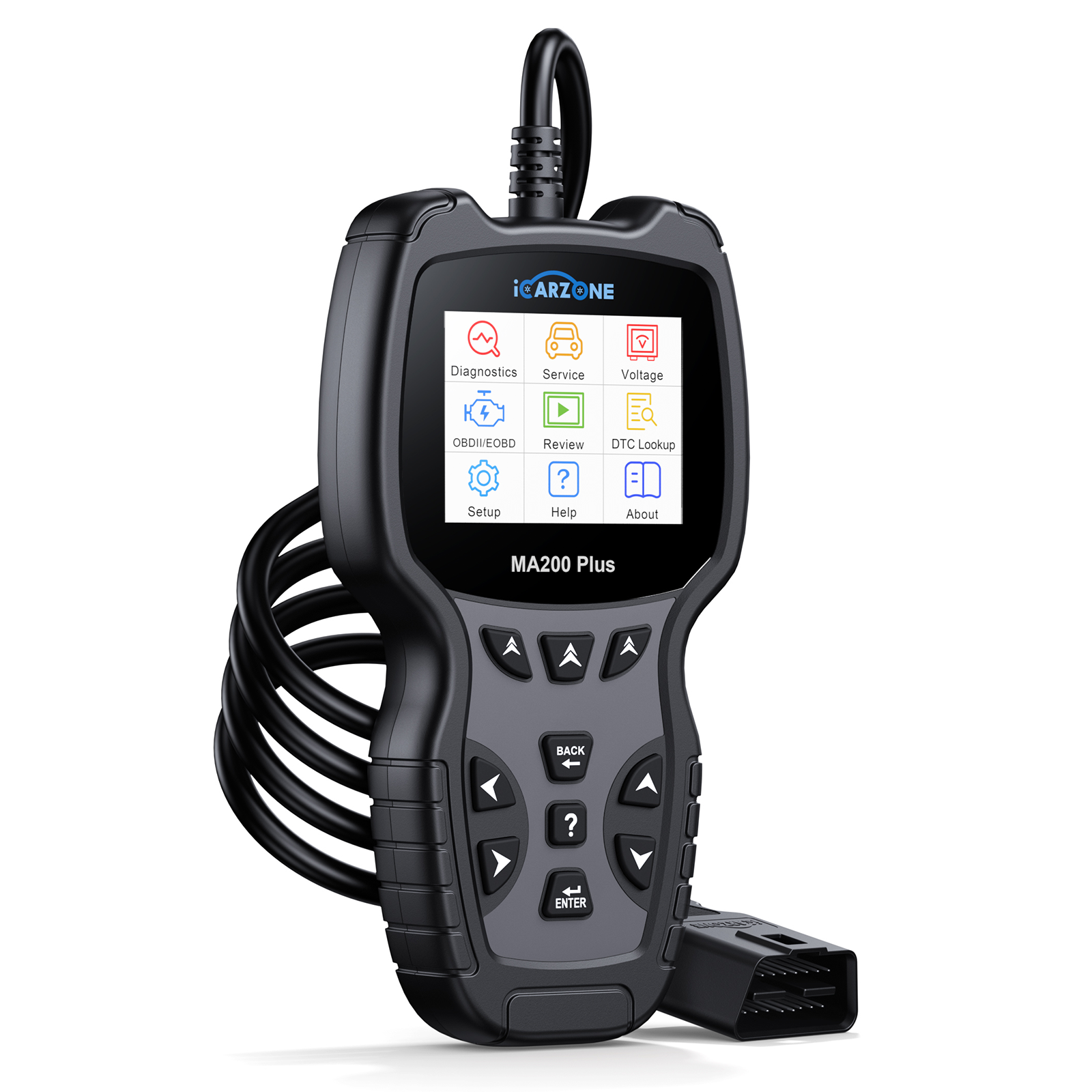U3000 Code Fix for Chevrolet Silverado 1500: Causes, Symptoms & MA100 Diagnostic Tool Guide
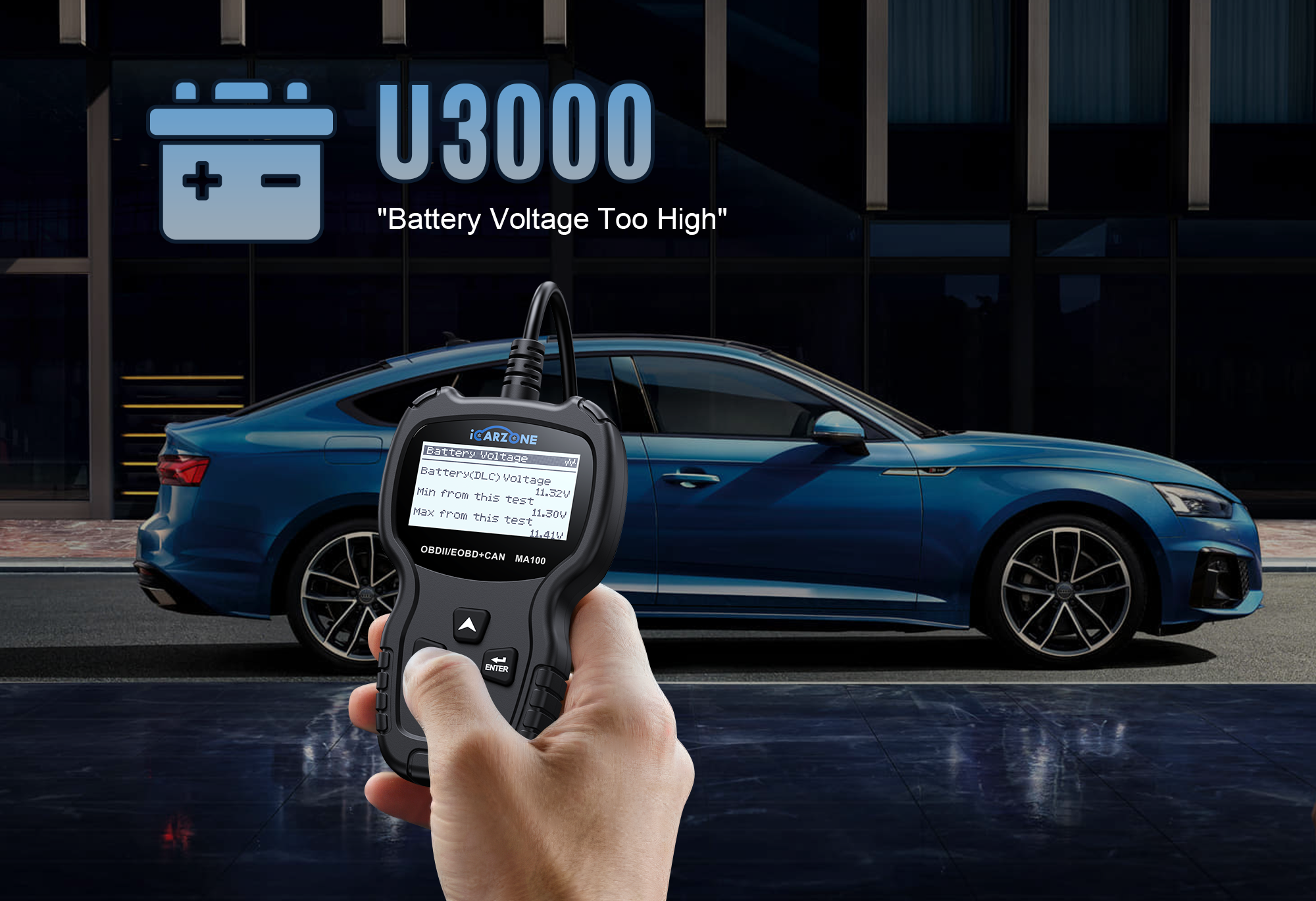
U3000: Controller / Network Module Fault (Silverado 1500)
Diagnose and fix U3000 in Chevrolet Silverado 1500. Learn common causes, symptoms, and step-by-step repairs using the ICARZONE MA100 CAN & module diagnostic tool.
Get ICARZONE MA100 Now1. What is U3000?
U3000 is a manufacturer-specific network/module trouble code commonly used to flag an internal control module fault, CAN-bus communication error, or module software/data corruption. Unlike generic powertrain DTCs, U3000 indicates either an internal module fault or network messages that the vehicle’s central controllers cannot interpret correctly.
Why It Matters for Chevrolet Silverado 1500
Modern Silverado 1500 models (2014–2024) rely heavily on multiple controller modules communicating over the CAN bus (ECM, TCM, BCM, ETC, etc.). A U3000 event can interrupt critical functions (stability control, transmission logic, display messages) and cause unpredictable behavior—especially under towing loads or when multiple modules are active.
2. Common Causes in Chevrolet Silverado 1500
U3000 can be triggered by many underlying issues. Below are the most common causes observed in Silverado 1500 repair cases and field reports.
- Module Internal Fault (Software/Data Corruption) — Corrupted calibration or corrupted internal memory can cause a module to broadcast invalid messages and trigger U3000.
- CAN Bus Wiring Damage or Chafing — Physical damage, poor grounds, or chafed wiring near the steering column, harness junctions, or behind the dash can introduce intermittent faults.
- Voltage/Power Supply Issues — Low battery voltage, poor charging system performance, or transient voltage spikes can cause modules to reset or miscommunicate.
- Water Intrusion / Corroded Connectors — Moisture in module enclosures (e.g., BCM, ETC module area) causes corrosion and intermittent U3000 messages.
- Failed Module Hardware — In some cases, a controller needs replacement due to internal component failure (requires module replacement or reprogramming).
3. Key Symptoms in Chevrolet Silverado 1500
U3000 may present with any combination of the following symptoms. Observing them together with a logged U3000 helps pinpoint the root cause.
- Multiple warning lights or a persistent "Service Vehicle Soon" message.
- Loss of specific functions (e.g., instrument cluster glitches, intermittent ABS/TCS alerts).
- Erratic module behavior — modules resetting, reboots, or inconsistent live-data streams.
- Communication errors recorded in the vehicle history—multiple U-codes or CAN bus timeout messages.
- Vehicle operates normally once restarted, then the fault returns (classic symptom of intermittent wiring or connector issues).
4. Silverado 1500 Models Prone to U3000
U3000 events are not exclusive to a single engine, but certain model years and configurations show higher incidence due to wiring routing, module placement, and software revisions.
- 2014–2019 Silverado 1500 — older harness routing that can be exposed near steering column junctions.
- 2020–2024 Silverado 1500 with advanced towing packages — additional modules and sensors increase CAN traffic, making communication issues more likely.
- Silverado trucks used off-road or in high-moisture environments — water intrusion is a frequent contributor to U3000.
When diagnosing U3000, it's important to consider the truck’s equipment level and any aftermarket electrical add-ons that may alter CAN bus behavior.
5. Diagnostic Steps (Silverado 1500 Focus) with ICARZONE MA100
MA100 is designed for CAN bus and module diagnostics. Use the MA100 to capture live CAN traffic, run module health checks, and perform TSB lookups. Below is a Silverado-focused workflow to find the root cause of U3000.
| Step | Action with MA100 | Silverado Goal | Pass/Fail Criteria |
|---|---|---|---|
| 1 | Full Network Scan > Select "Chevrolet" > "Silverado 1500" > "Network / Modules" | Capture U3000 and related U-codes; list modules reporting communication failures | Pass: Single module reporting U3000 | Fail: Multiple modules (indicates bus-wide issue) |
| 2 | CAN Bus Monitor > Record live CAN traffic while reproducing the fault | Identify message timeouts, malformed frames or bus errors | Pass: Clean bus with normal message rates | Fail: Error frames, high CRC or timeout counts |
| 3 | Module Health Test > Run self-test on module that set U3000 | Check internal module diagnostics and memory checks | Pass: Module internal tests OK | Fail: Internal fault (replace/reprogram module) |
| 4 | Power & Ground Check > Use MA100 to test supply voltage and ground integrity at module connector | Verify stable voltage and solid ground references | Pass: Stable 12V and good ground | Fail: Voltage dips/spikes or high ground resistance |
| 5 | TSB / Firmware Lookup > Enter VIN and check MA100 database for related service bulletins or firmware updates | Determine if a software update or calibration fix exists | Pass: No active TSB | Fail: TSB available (requires reflash/reprogram) |
Case Example: A 2018 Silverado reported intermittent U3000 and cluster flicker. MA100 CAN Monitor showed repeated message timeouts on the network during heavy steering input. Physical inspection found a chafed CAN pair near the steering column harness—repairing the harness and performing a module clear/test resolved the U3000 condition.
Diagnose U3000 with MA1006. Fixes & Execution for Chevrolet Silverado 1500
U3000 fixes depend on the root cause. MA100 provides advanced functions (CAN tracing, module health, and firmware lookup) that streamline the repair workflow.
- Reprogram / Reflash Module — If MA100 identifies corrupted calibration or a recommended firmware update, reprogram the affected module per OEM instructions using MA100’s guided reflash.
- Repair CAN Wiring — For chafed or shorted CAN pairs, repair/replace wiring and use proper shielding and routing. Secure harnesses away from moving components.
- Restore Power & Grounds — Tighten battery terminals, inspect chassis grounds, and verify alternator output to eliminate voltage-related resets.
- Replace Faulty Module — If a module fails internal tests, replace and program with MA100 to match vehicle configuration.
- Dried / Cleaned Connectors — For water intrusion, remove, dry, and clean connectors with contact cleaner; apply dielectric grease to protect from moisture.
Silverado 1500 Workflow Tips
- Always capture live CAN traces with MA100 before replacing modules—many U3000 cases are wiring or voltage issues, not module failures (saves unnecessary part costs).
- Check for aftermarket electronics or recent work near the dash/steering harness that could have disturbed CAN routing.
- After repairs, clear codes and run a 20–30 minute validation drive while logging CAN traffic with MA100 to ensure stability under load (towing if applicable).
7. Repair Costs & Safety Tips for Silverado 1500
Module Reflash via MA100: $0 (tool-based) vs. $100–$250 dealer fee
CAN wiring repair kit: $25–$75 (terminals, loom, heat-shrink)
Module replacement (if required): $250–$900 (parts only — vary by module)
Professional repair (labor + parts): $300–$800 depending on access & module type
Critical Safety Precautions
- Disconnect the negative battery terminal when performing harness repairs to prevent short circuits and accidental reprogram events.
- Never drive a Silverado exhibiting multiple communication failures or disabled safety features — unpredictable behavior increases risk.
- Use proper OEM torque and connector release tools to avoid damage during module removal or harness servicing.
- After repairs, always clear codes and confirm module programming with MA100 to ensure compatibility and avoid latent faults.
8. Preventive Maintenance for Silverado 1500 U3000
Reduce the chance of U3000 with these preventive steps—many are quick checks that catch issues before they become faults.
- Regularly inspect CAN wiring routing during oil changes—catch chafing or loose clips early (especially near the steering column).
- Maintain battery and charging system health—weak batteries cause module resets that can lead to U3000 flags.
- Protect module enclosures from water intrusion; apply dielectric grease to vulnerable connectors.
- Use MA100 annually to run a network health scan and firmware check — early detection of degraded frames or pending errors prevents sudden failures.
9. Frequently Asked Questions
Not inherently. If the root cause is a manufacturing defect or covered component, a dealer repair may be covered under powertrain or bumper-to-bumper terms. Unauthorized modifications that cause U3000 may affect coverage.
Yes—poorly integrated aftermarket electronics that share or disturb CAN wiring, grounds, or power supplies can trigger U3000. Always route accessories away from factory CAN pairs and use proper isolation interfaces.
Yes—MA100 provides CAN bus monitoring, module health tests, and guided reflash/firmware update capabilities for many Silverado modules. For dealer-only programming steps, consult OEM guidance.
Simple wiring or connector fixes: 1–2 hours. Reflash/program only: 30–90 minutes. Module replacement and programming: 1–3 hours depending on accessibility and calibration complexity.
10. Summary
U3000 (module/network fault) is a broad flag that points to internal module errors, CAN bus communication issues, or power/ground irregularities in Chevrolet Silverado 1500 models. Using an advanced CAN & module tool like the ICARZONE MA100—which offers CAN monitoring, module health tests, and firmware lookup—greatly reduces diagnosis time and prevents unnecessary module replacements. Most U3000 cases are resolved by repairing wiring, restoring solid power/grounds, or reflashing modules with the correct calibration.
Diagnose U3000 with the ICARZONE MA100
MA100 is engineered for CAN bus and module diagnostics—capture U3000 events, analyze message frames, and apply firmware updates without expensive dealer visits. Ideal for technicians and DIYers diagnosing Silverado U3000 code scenarios.
Order ICARZONE MA100 TodayLong-tail keywords included for SEO (moderate density): "U3000 code Chevrolet Silverado 1500 MA100 scan tool", "how to diagnose U3000 Silverado with MA100", "MA100 CAN bus diagnostic tool for Silverado U3000".


